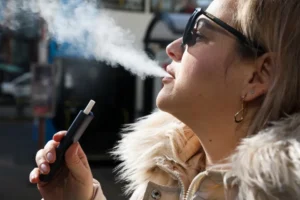As vaping becomes more popular worldwide, many smokers are curious about the cost differences between vaping and traditional cigarettes. For those looking to save money, understanding the long-term and short-term costs of both options is crucial. In this article, we will compare the costs of vaping and traditional cigarettes, including the purchase of devices, e-liquids, and maintenance costs. Additionally, we will provide some practical tips for reducing costs.
1. Initial Investment: Devices and Accessories
Traditional Cigarettes:
Initial Cost:
The initial cost of smoking traditional cigarettes is relatively low. Smokers only need to purchase a pack of cigarettes each time. The price of cigarettes varies depending on the brand and region, typically ranging from $2 to $10 per pack.
Cost Cycle:
A pack of cigarettes generally lasts 1 to 2 days, depending on the smoker’s habits.
Vaping:
Initial Investment:
The initial cost of purchasing a vape device (including the vape kit, atomizer, and battery) is higher. A basic vape device usually costs between $20 and $50, while high-end models or custom devices can cost upwards of $100.
Device Lifespan:
Vape devices tend to have a longer lifespan, usually 1 to 2 years, depending on usage. However, components like atomizers may need to be replaced over time.
2. Ongoing Costs: E-Liquids and Maintenance
Traditional Cigarettes:
Tobacco Costs:
The ongoing cost of smoking traditional cigarettes is significant. Assuming each pack costs $5, and the smoker consumes one pack a day, the monthly cost is about $150. Over the course of a year, the annual cost of smoking traditional cigarettes can amount to approximately $1,800.
Long-Term Expenses:
Unless smokers reduce their consumption or quit, the annual expenses for cigarettes remain constant.
Vaping:
E-Liquid Costs:
The primary ongoing cost for vaping is e-liquid. Prices for e-liquids vary by brand, capacity, and quality. A 30ml bottle typically costs between $10 and $30, which lasts about 1 to 2 weeks, depending on usage. If a person uses 2 bottles per month, the monthly cost would be around $20 to $60.
Device Maintenance:
Maintenance costs for vaping are relatively low. Parts such as atomizers and coils need to be replaced every 1 to 3 months, with prices typically ranging from $5 to $20 per item. The annual cost of replacing atomizers and other small parts is about $40 to $100.
3. Other Factors Affecting Costs
Smoking Habits:
Vaping allows for more control over consumption. Smokers who wish to reduce their intake or quit may find vaping to be a more cost-effective option.
Device Quality and Brand:
The choice of vape device and e-liquid brand will significantly impact costs. Low-end devices and e-liquids can reduce both initial and ongoing costs, while high-end brands may offer better performance and longer device lifespans.
Taxes:
Some countries or regions apply different tax rates to traditional cigarettes and vaping products, which can influence the cost difference between the two.
Conclusion
Overall, while vaping requires a higher initial investment, the long-term costs tend to be lower, especially for those who smoke frequently. Traditional cigarettes incur regular, recurring costs primarily related to purchasing tobacco, whereas vaping costs are mainly associated with e-liquids and occasional device maintenance. Therefore, vaping can be more cost-effective in the long run, especially for those who smoke regularly.
However, the most cost-effective option of all is quitting smoking altogether. In this regard, vaping can serve as a transition tool for smokers looking to reduce their tobacco dependence.












